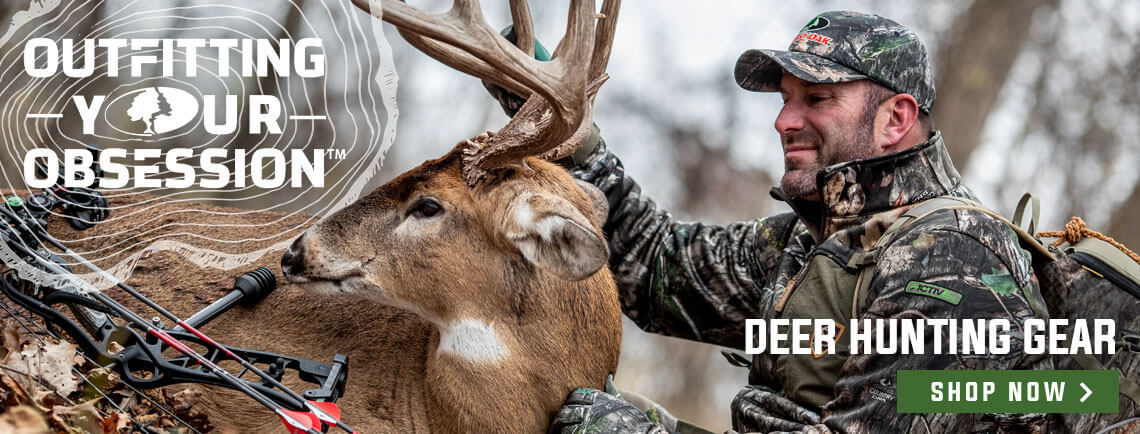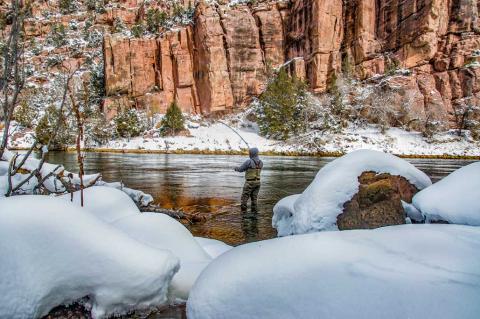Provided by John E. Phillips
Terry and Mark Drury have owned Drury Outdoors for the last 32 years, and today produce and direct several TV shows, including “Thirteen,” “Natural Born,” “Bow Madness” and “Critical Mass: Evolve.” They’ve consistently been able to take older-age-class bucks every year on the properties they own and manage for wildlife. They’ve also had a symbiotic relationship with Mossy Oak for many years. They’ve worn Mossy Oak even before their company has been in existence, and they use all the Mossy Oak BioLogic products that Mossy Oak produces.
“Mark and I consider ourselves part of the Mossy Oak family, because we know all the folks who originally started Mossy Oak, including Toxey Haas, Mr. Fox Haas, Ronnie “Cuz” Strickland and Bill Sugg,” said Terry. “We’re proud to wave the Mossy Oak flag and not only wear the company’s camo, but use many of the products they offer.”
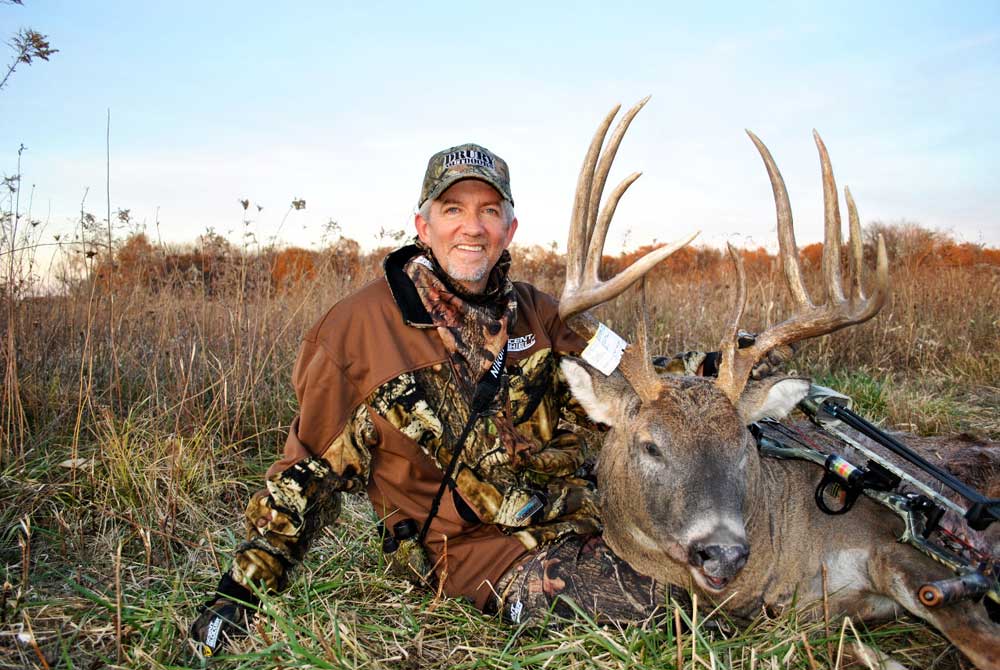
Terry Drury explains how he and Mark get ready for deer season and the bucks they pinpoint to hold or target on their property.
Preparing for the Fall Deer Season the Previous January and February
Our deer season starts with nine months of preparation, so that when deer season arrives, we’re ready to hunt. The reason for that is deer hunting and turkey hunting are not only our favorite sports, they’re also our chosen professions for our TV shows and social-media presence. In the early spring, we’ll start putting lime and fertilizer on our green fields. After doing soil tests, we see how much lime and fertilizer we need to use per acre on each of the fields and hunting plots we have on our lands. We want to get as close as we possibly can to the proper soil pH to make sure that the crops we plant are extremely palatable to the deer and turkeys on our properties.
While we plant these fields and hunting plots in the spring and in the fall, we’ll also begin checking and improving all of our tree-stand sites in the early spring. We’ll trim shooting lanes and cut dead trees and non-commercial trees in the spring. Then we’ll do another round of cutting, trimming and pruning in the fall before hunting season begins. We go back through this same process again in the fall, because often there will be sprouts, young trees and limbs that need to be trimmed from their summer growth. We check the straps and the safety lines on all of our tree stands and do whatever maintenance work we feel is necessary to make the stands as safe and as quiet as possible. Our tree steps, ladders and any devices we use when we’re hunting off the ground will be checked at this time, too. In the spring, I go all the way around my property inspecting my barbed-wire fences to ensure no trees or limbs have fallen on my fence between us and our neighbors. Many of our neighbors have cattle, and the only way to be sure that your neighbor’s livestock doesn’t come onto your property and eat-up your green fields is to keep a watchful eye on your fences.
During the spring and summer (up until the fall) we put out supplements at critical times for improving the health of our fawns, does and bucks. Now in certain areas of the country, supplements are not legal to use. So, you’ll need to check with your fish and game commission for your region before you put out supplements. But many of the counties in Missouri where Mark and I live allow supplements of any kind to be put out, as do many other sections of the country. We use Ani-logics’ wide variety of deer supplements designed to help deer health and growth. These specific supplements were designed by veterinarians for whitetails. Now remember, supplements aren’t legal to put out in all counties or in all states because of CWD (chronic wasting disease). We start putting these supplements out in February as soon as deer start dropping their antlers because these supplements help antler growth as well as provide other nutritional benefits. We also use the supplements to draw deer into the areas where we have trail cameras to begin to census our deer herd during the antler-growing and the fawning times of the year.
Why Trail Cameras Are a Must
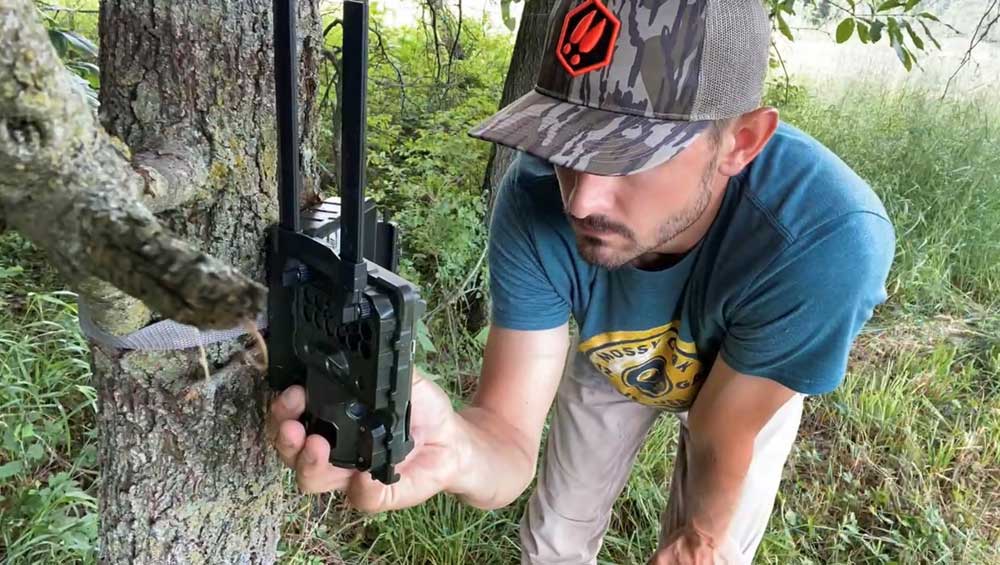
We usually have our trail cameras set up within bow range of where we plan to hunt. When we start checking our tree stands and our fences, we also check our trail camera SD cards, and we’ll probably put in new batteries. We also take lens wipes with us to make sure our cameras’ lenses are clean, and we’ll confirm that everything about the camera is functioning as it should be. Another thing we want to check is that we have cell service in the places where we’ve put our cameras. We like using Reconyx Cameras because they report to us when deer or turkeys walk in front of them. They’re not linked together like some camera systems are, however. With cameras that are linked together, if one camera malfunctions, you typically don’t get any of the pictures, not only from that camera, but from any of the cameras you have linked to that system. Even in areas where there’s bad cell service, we still get good pictures from our Reconyx cameras. We update our cameras as new technology comes to the marketplace.
A nice feature of these Reconyx cameras is that we can get our pictures directly from the cameras in the woods, but those pictures are also sent directly to our cell phones. We’ll get notifications of a new picture from every one of our cameras any time a deer walks in front of it. It’s great that we’re able to check every camera remotely to see how much battery life we have, to change the view and to see when the lenses on these trail cameras need attention. I’m amazed at the technology that’s been implemented in the new trail cameras available for outdoorsmen today.
On a 10-acre parcel, we’ll have one or possibly two cameras, depending on the pictures of the deer that we get from those cameras. For instance, if I get pictures of a really big deer on those 10 acres, I’ll add some more cameras to that area. Many hunters think that if they have one camera per 100 acres that they have a lot of cameras out and working for them. But we’ve learned that, in reality, one camera per 100 acres isn’t enough to be able to keep up with deer movement on your property. Instead, having four to five trail cameras per 100 acres is really helpful in learning how to pattern bucks each season. We’ve also learned that the number of trail cameras you have out has a direct correlation to the number of nice bucks you’ll find on your property. I look at trail cameras like I view shed hunting: the more people we have hunting sheds on our property, the more sheds we’ll find. The more cameras you use on your property, the more bucks you’ll pinpoint.
I believe one of the most important times to use trail cameras is just before or during the very early season. At that time of the year when the weather is generally hot, deer usually will bed down in the shade, get up and go to their feed and then return and bed down in about the same place where they were bedded earlier. They will move more if their bedding area is closer to water in the early season when the air temperature is high, and the need for water is greatest. Again, a good rule of thumb if you really want to find the bucks on your property with trail cameras is to use four to five trail cameras per 100 acres.
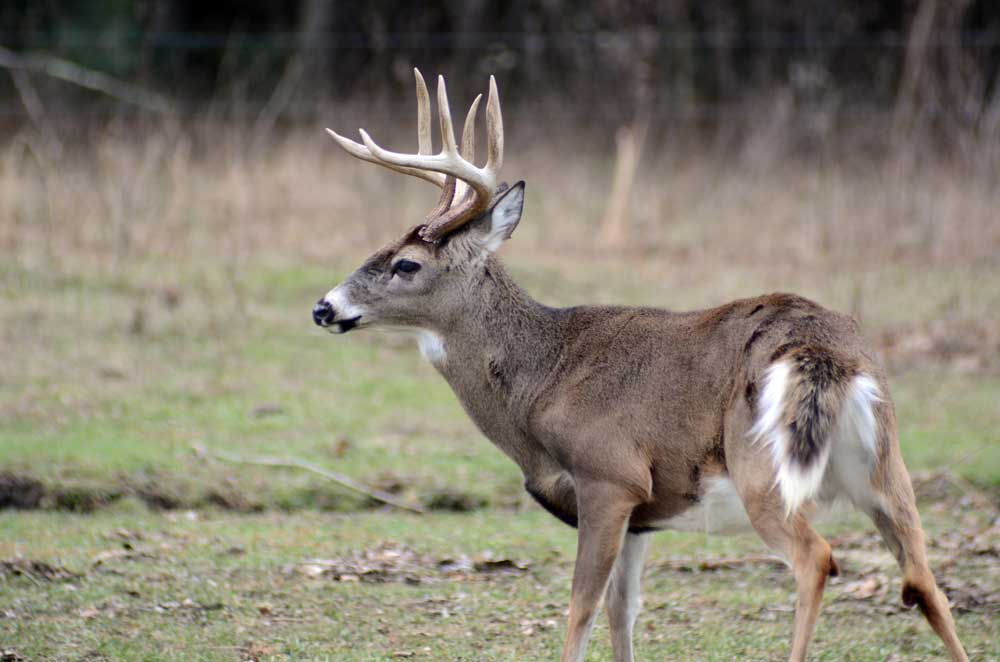
Our bow season in Missouri arrives on September 15, and the week before the season, we spend a lot of time studying the trail-camera pictures taken on the properties we hunt. A lot of the deer in our area are still in the velvet during September, and bucks usually start going into hard antler during the month of September. That’s not true nationwide. As a general rule, the last week of August and the first week of September are the weeks that deer start rubbing the velvet off their antlers in our section of the state. This time is when we really start studying our trail-camera pictures to try to identify the bucks that we didn’t want to take last season and see what their antlers look like for the upcoming season. We want to find out where they’re living and to pattern them.
Another thing we’ve observed over the years is that just before bow season starts in our area, bucks begin moving around quite a bit. They’ll move from their summer pattern toward their fall and winter patterns. That means bucks you may have been keeping up with all summer long will seem to vanish, and bucks you don’t have any trail-camera pictures of previously will start showing up on your trail cameras during this time. We’ll start picking out the bucks we want to take for the coming season. We identify where those bucks are living and moving and decide whether we should let a buck go and grow another season or attempt to take him in the upcoming season. We’re simultaneously determining what wind direction we need to have, and where we should place our stands, or whether we can hunt from stands that we already have up.
How to Use What You’ve Learned from Trail Cameras
Mark and I both start a lot of strategizing to determine: which bucks we’ll attempt to take during early season; how we’ll reach a place without that buck seeing or smelling us; and whether he’s going to be a buck we’ll hunt in the morning or in the afternoon.
On my property, I want to try to take my bucks at 4.5 years old or older. I’ve learned that many times a 4.5-year-old buck will have a really nice rack that could score in 150 to 160 inches. Now, having said that, we also know that most of the 4.5-year-old buck class will typically be in the mid-140-inch rack size. So, another characteristic that we’ll look for is the potential that 4.5-year-old buck may have to eventually produce a buck with a bigger body size and a bigger rack.
Now, I’ve noticed on my property, when a buck gets to be 5.5 years old, the sizes of their racks and their body weights tend to decrease, or their racks don’t grow much bigger than when they’ve been 4.5 years old. The two factors we believe result in that 5.5-year-old drop-off in rack and body size may be because of the distance 4.5-year-old bucks must travel chasing estrus doe(s) during a rut, and the pecking order of the bucks in their home range. Bucks will disperse and move out of their home ranges when a bigger, more dominant buck is in their home range that’s breeding most of the does. A 4.5-year-old buck uses up a lot of energy, fat reserves and weight during the rut. We believe this may be part of the reason why the buck and his antlers usually stay about the same size at 5.5 years old as they’ve been at 4.5 years old.
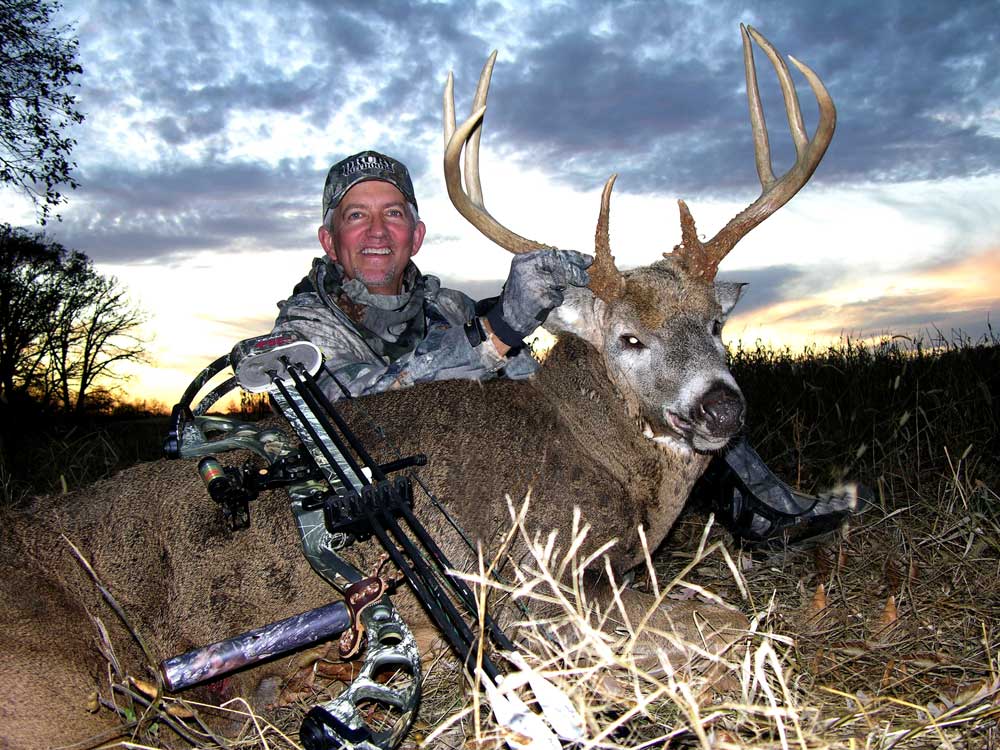
Then when a buck gets to be a 6.5-year-old, however, we’ve noticed that this seems to be the time when his body grows tremendously - as does his rack. When the buck’s 5.5, I believe his need to feed is greater than his need to breed. But when a buck reaches 6.5 years old, he narrows down his home range and may become the dominant buck in that area. Mark and I have observed that 5.5- to 7.5-year-old bucks will have a much smaller core area that they live in, compared to what their core areas were from 1.5 to 4.5 years old. From 6.5 to 7.5 years old, a buck will start concentrating on food supply and thick cover because eating more and surviving longer becomes more of his concern than chasing does all over the country. We like to try and harvest our bucks from 6.5 years old to 8.5 years old, because we believe that’s when their body sizes and their antlers are the biggest. Our philosophy is that when you can allow a buck to survive until he’s 6.5 to 7.5 years old, that’s about the optimum age to try to take a trophy buck.
How Much Land Do The Drurys Hunt?
Mark and I both lease properties and buy and sell land, so I can’t tell you how much land he has to hunt, but I have 1200 acres in one large chunk of land. Then I lease 450 acres here in Missouri and lease another 240 acres. In Illinois, Mark and I have 1,850 acres in one contiguous piece that we lease.
In 2018, our region had a severe case of CWD (chronic wasting disease) that really hurt the number of bucks we had on our properties. Watching our bucks on all of our properties and being careful to pass up numbers of bucks to let them grow and allow the herd to recover from CWD has been critical.
Mentioning that white-tailed bucks seem to have peak years and down years is very important. One year your land may have a big number of older-age-class bucks that you’re getting photos of on trail cameras. Then the next year, you may not have nearly as many bucks as you’ve thought you should have. Mature, white-tailed bucks seem to come into and move out of your life. By that I mean, you may have been watching a buck that’s 6.5 years old or older. Then you decide to take him the next hunting season, but he vanishes. You don’t know whether he’s been harvested by another hunter, if he’s been killed in a fight with other bucks, or if he’s gotten some other physical challenges that caused him not to survive during the year you’ve planned to take him. Also, perhaps another buck in that area has moved in and become more dominant than the buck you’ve hoped to take. That other buck may have a smaller rack and even a smaller body weight but is just mean and has run the buck you’ve been hoping to take out of that region. Or, you may have three or four older-age-class bucks on a piece of property. Then the next year they’re all gone, and the land will home a whole crop of new bucks or younger bucks you’ve never seen before, moving into the older age classes. So, there are many, many factors influencing how many older-age-class bucks you’ll have on your land.
For the 2021 deer season, however, I’ve found five or six older-age-class bucks that I’m really going to concentrate on and hopefully have an opportunity to take. On both the 1200 acres that I own and the 1800 acres that I lease, both properties typically will have about the same number of older-age-class bucks on them. In Illinois, even though I have 1800 acres leased, quite a bit of that is tillable and is farmed. So, the amount of land that I really have to hunt there is much smaller than the 1800 acres.
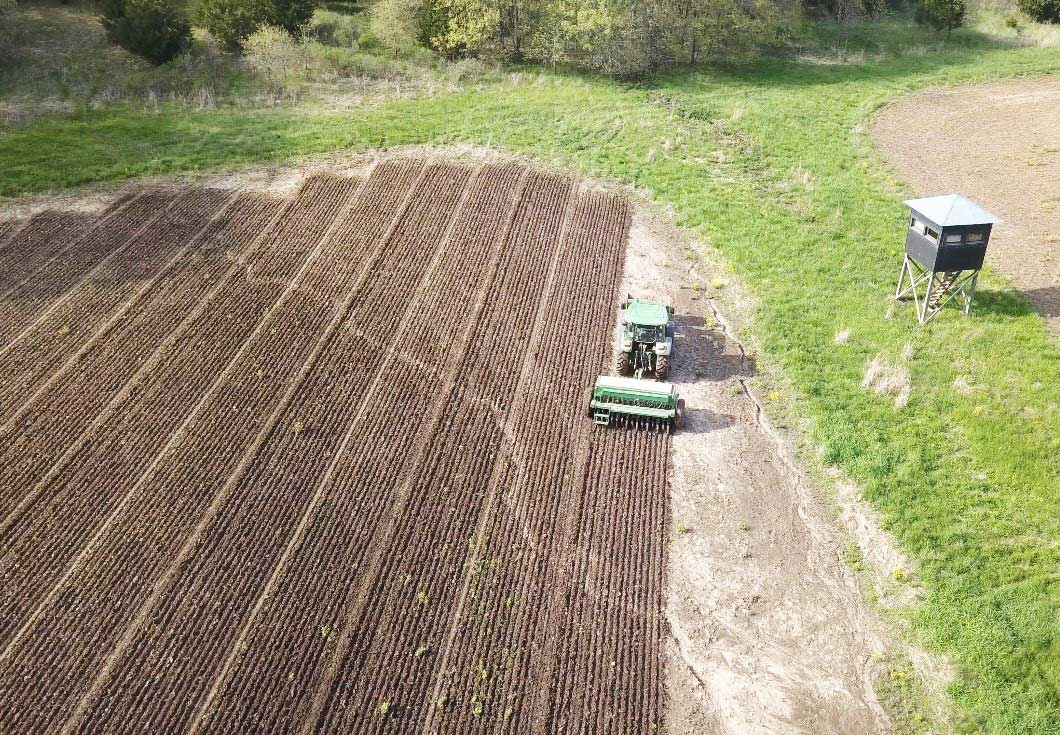
How the Drurys Hold Older-Age-Class Bucks on Their Lands:
* Provide as much food, cover and security as we can for the bucks on our lands.
* Have as few hunter intrusions as possible, and create sanctuary areas.
I believe the number-one reason many hunters can’t hold bucks on their lands to allow them to reach those older-age classes is because of hunter intrusion. To take these bucks, we have to go into areas we plan to hunt, check our tree stands and shooting blinds and work with our trail cameras. All of that is intrusion. So, the first thing we try to do is go into our stand sites or camera sites in the middle of the day when the bucks should be bedded-up and not be traveling to food or water. We also don’t go into those places when we’ve got a wrong wind that will carry our human odor to where the bucks may be bedded down. By using the new Reconyx cameras, the only time that we have to go in to check our trail cameras is when a battery goes out or some damage may have occurred to the camera.
On all the properties we have to hunt, we try to stay out of most of that property all year long unless we shoot a buck that runs into one of our sanctuary areas. We’ve noticed something that many other hunters already know that most of the time the biggest bucks on any property are taken from regions where hunters usually don’t hunt. So, by giving bucks plenty of sanctuary, we drastically increase our odds of keeping those bucks on our lands. Again, I truly believe that intrusion is the number-one reason that older-age-class bucks leave properties with a lot of hunting pressure and set up homes in areas where they’ll rarely if ever see a hunter during hunting season.
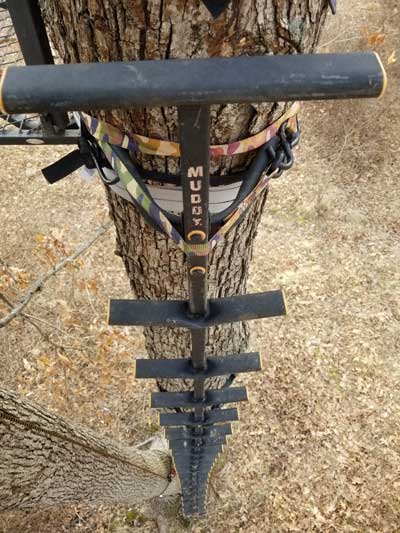
* Hunt stands carefully.
I’ll hunt that stand as often as I have a favorable wind to hunt from that stand site, and as long as the weather and the moon indicate that the buck should be on his feet and moving. For instance, if we have a northwest wind and I’m hunting an older-age-class buck with a stand facing northwest, I’ll hunt that buck every time I have that northwest wind. But I won’t go to that stand site when I have a southwest wind, or when the wind is swirling, and there’s any possibility that that buck will pick up my scent. However, if I have a south wind, I won’t hunt that buck.
As long as that older-age-class buck doesn’t know I’m hunting him, I have a better-than-average chance to take him. If that older-age-class buck smells me, however, more than likely, he’ll move to another zip code. I believe if you only hunt an older-age-class buck when the moon, the weather and the barometric pressure are right, you drastically increase your odds for being able to harvest that buck.
What Are the Optimum Conditions To Hunt Older-Age-Class Bucks?
For many years now, Mark and I have studied the different factors that relate to the optimum time to take an older-age-class buck. Here’s what we’ve learned: there’s no one telltale factor that you can depend on to indicate the right time to hunt a mature buck. However, there are certain combinations of factors that have proved to Mark and I that when these conditions all happen at the same time, your chances are the very best to harvest that buck of a lifetime.
I believe those factors include hunting:
* for three or four days before or after a full moon;
* in weather conditions 10 degrees below the average temperature for the place I’m hunting;
* when there’s a little bit of spitting rain;
* when a 7 to 10 mile-per-hour wind is blowing in my face; and
* with a rising barometer that’s 30.5 to 30.15 or 30.2.
How the Drury Outdoors DeerCast App Works
Mark and I developed an app called Drury Outdoors DeerCast. We compiled tons of information for two to three years before we released this app. DeerCast is an algorithm that predicts when deer will move during daylight hours, and when a hunter can expect to see the most movement with the deer. We’ve continued to improve and develop more features for DeerCast every year, and we’re always comparing notes from different places we hunt around the country on deer movement and the factors that influence deer movement.
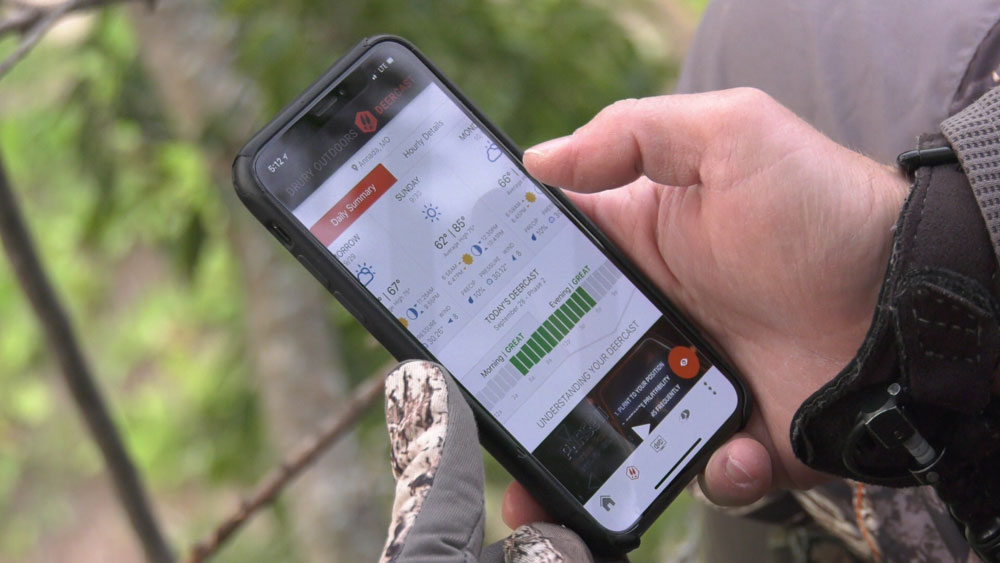
What we’ve discovered is that there are about 13 different influencers that help to determine when a whitetail is on his feet and moving during daylight hours. We believe DeerCast is one of the most accurate apps for predicting deer movement minus intrusion. There are certain things that happen when you’re hunting that you can’t control that will cause you not to see deer - even if all the other factors are in your favor - like dogs running through your area, a sightseer driving through your region on a four-wheeler, someone flying a drone, or a person hiking through that region. When the deer are undisturbed, however, DeerCast is pretty accurate. I believe it’s within 96 - 97% accurate, and we’re constantly tweaking DeerCast to try to improve on it.
There’s a free version of the app, so that you can test the waters of its accuracy and see how it works. If you like it, there’s a $9.99 per year version of DeerCast, and there’s an Elite Version that sells for $19.99 per year that gives you a custom setting, a deer tracker feature, the 10-day forecast and the 10-day predictor that tells you when your odds are best for seeing deer move. This app also contains our entire video series with lots of content and deer-hunting information. That means you can watch some of our deer-hunting videos on your phone, while you’re waiting on a buck to show up in your stand or even in your office when you’re taking a break. You can purchase the app online through Drury Outdoors Online, or you can go to the Apple App Store or the Google Play Store to find the app for Android or iPhone. The name of the app is “Drury Outdoors DeerCast.”
What Other Factors Impact Deer Hunting?
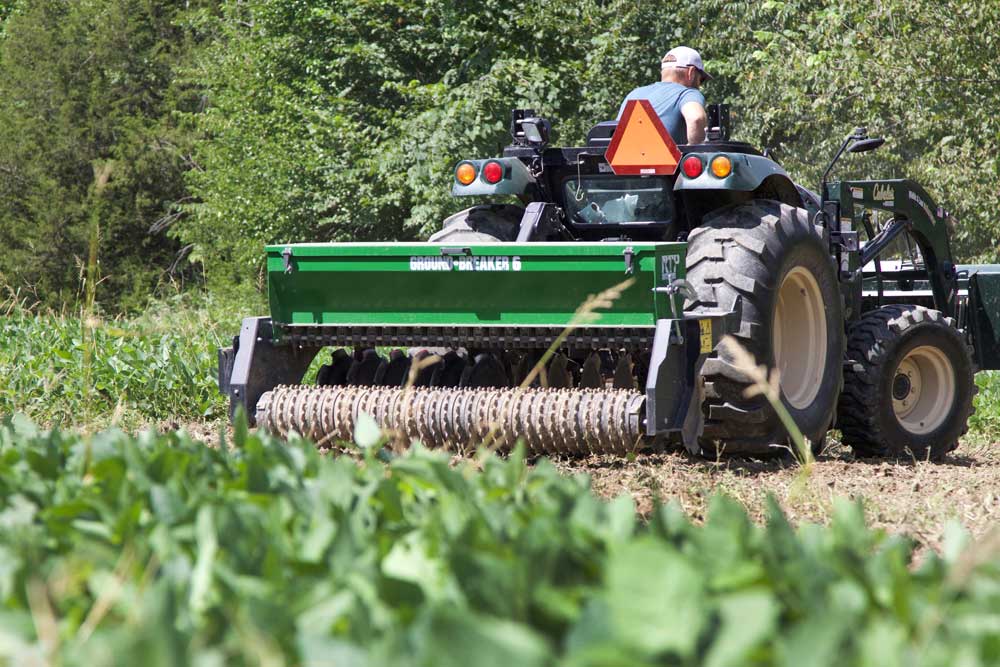
Another thing we’ve learned is that if you don’t have trail-camera pictures of a really big deer living where you’re hunting, you’re probably not going to take a mature buck. My brother Mark started saying many years ago, “You’re only as good as the spot you hunt.” He means that you need to do all your homework ahead of time to know what kind of conditions need to come together on the day you’re hunting and know that you’ve got trail camera pictures showing that a big buck does pass by the spot where you’re hunting. Now the exception to that rule is if you put in the time, the work and the money to grow big deer and hold big deer on your property, you can expect to have older-age-class bucks coming past that spot where you’re hunting. If that mature buck doesn’t come by your stand site when everything is right, then you need to find another spot where that big deer is likely to walk by your stand. We believe in making the place you’re hunting better for the deer to come by or else find another spot to hunt. As I’ve mentioned earlier, we’ve really put in a lot of time and work in preparation for this 2021 deer season.
We’ve had some unusually warm weather here in Missouri in 2021. Most hunters know that deer don’t tend to move when the weather is warm. When we had a full moon on September 20, 2021, (the traditional name for that full moon is the harvest moon), our trail cameras surprisingly reported that even though the weather was hot, we had some pretty good deer movement three days before and three days after that harvest moon. Most of the movement we had was in a food plot that had green beans and Mossy Oak BioLogic Clover, Maximum Winter Wheat, sugar beets and Deer Radish.
I’ve seen five shooter bucks since September 20, 2021, that most any hunter would shoot, however I’ve been doing some scouting for my mom, Lucille Drury, who is 88 years old. I wanted to try to find several mature bucks that she should be able to harvest. Mom has some shoulder problems, and being 88 years old, she’s not as nimble as she once was. She shoots a Mission Crossbow during crossbow season, and during firearms season, we’ll usually have her shooting a Winchester .223. We’ll cock the crossbow for her, and she’s a pretty good shot. Last year she harvested two bucks and a doe while hunting with my brother Mark.
To help her get into some elevated box blinds on my property, I’ve made a platform on the bucket of my John Deere tractor. We get mom to stand on the platform, someone stands with her, and then she can walk right off that platform into that elevated box stand. We get her set up in a box stand like this every morning and every afternoon she hunts. Interestingly enough, my mother didn’t really start hunting or taking deer until she was 85, but since she took that first deer, she’s really excited about going hunting. In fact, mom has had one knee replaced and needs to have the second knee replacement, but she decided to hold off on that operation until after deer season.
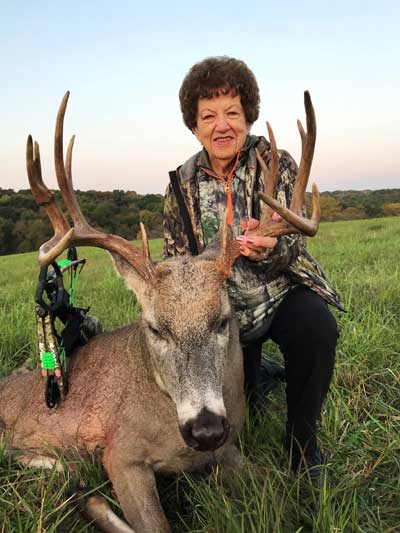
As I’ve gotten older, I’ve gotten pretty picky about the bucks I want to take, and I’ve got a couple of bucks on my property that I really want to try to harvest this year. Besides that, my son Matt is coming up to hunt with me this year. We’ve got a sweepstakes winner coming in this deer season, and I’ve got a couple of grandsons coming in too. So, I don’t want to shoot a buck that I want one of those people to shoot. Now, we don’t pick out a specific buck for a certain hunter to try to take. But, we do put them on the stands where we hope one of these nice bucks will walk by them, and they can take that buck. We may end up having to move our friends and relatives around to two or three different stand sites for them to take a nice buck. We’ve been watching some of these deer since they were 2. 5 years old, and now they’re up to 4.5 to 6.5 years old. So, we’ve learned over the years, where these bucks are most likely to walk in front of one of our stands.
Another thing we do is we study our trail-camera pictures of where these bucks have shown up on the same food plot at the same time the previous year, and many times they’ll be on that same food plot the following year. That occurs about 30% of the time. We’ve harvested a lot of nice bucks by going to the spot where we’ve seen a nice buck the previous year on the same day the following year.

